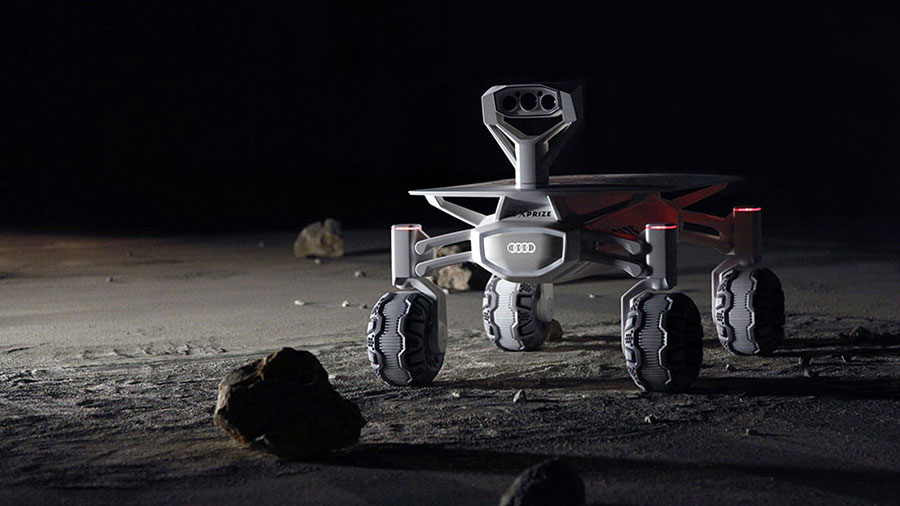Audi will be the manufacturer of the rover for Google’s Lunar X-Prize competition, which has teams of scientists striving for a $30 million mission to land an autonomous vehicle on the Moon.
The rover is expected to travel more than 500 meters on ground, analyze the remains of the Apollo 17 lunar rover, and transmit high-quality photographs of the lunar surface. The first team to present a viable plan will earn $20 million, while the second will earn $5 million. Surpassing the basic expectations and making relevant scientific findings will be rewarded with more prize money.

The Moon will be our checkpoint in space
The most promising group in the competition is PTScientists, as it has already announced its plans to send lunar probes to where the Apollo 17 crew landed back in December of 1972, the last time humans stepped on the Moon.
The lunar module is expected to land at least 2 miles from where Apollo 17 landed, near a valley named Taurus-Littrow. The rover manufactured by Audi will then approach the Apollo vehicle for inspection, but following NASA guidelines, it will remain at least 200 meters apart from the Apollo 17 landing site, since it is viewed as a place of historical importance for the whole human race.
Analyzing the Apollo 17 rover will provide information about space radiation, temperature variations, and any other external factor that may have affected it in its 44 years of lunar residence.
The rover developed by Audi is expected to be a lightweight and solar-powered vehicle, whose manufacturing will be sponsored by Spaceflight Industries. The rover will be delivered by the Autonomous Landing and Navigation Module (ALINA), which will be put into orbit by a commercial launch from Earth.
The module is able to deliver up to 100 kilos to the lunar surface, which can account for two rovers and additional scientific equipment. Its additional cargo capacity has already been offered to scientists on Earth.
“We’re more used to designing cars on Earth, but when we heard what the PTScientists were planning we wanted to support them as fellow German innovators by sharing some of the knowledge we have built up over decades of vehicle design and manufacturing,” stated Ulrich Schwarze, Audi’s project director.
The competition expects the teams to send their projects to the Moon by 2017, which will ensure that space will be the primary source of interest for us humans, seeing that 2016 is expected to be the hottest year on record and that space entrepreneurs are racing towards putting human life on Mars. Teams who have not secured a launching date by the end of 2016 will be eliminated from the competition.
PTScientists have released a video alongside Audi, explaining their project and showing how the lunar rover is expected to make its landing on the Moon. The short film is starred and directed by Frank Schätzing, an international best-selling science fiction author.
https://www.youtube.com/watch?v=4hNa8uiNdR8
Source: Lunar Xprize
